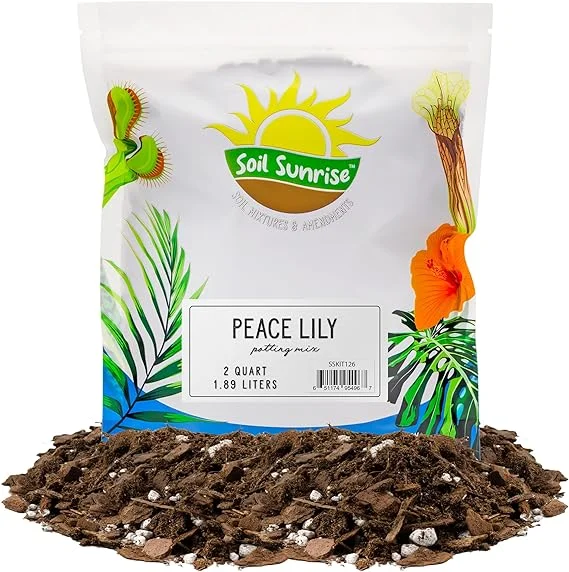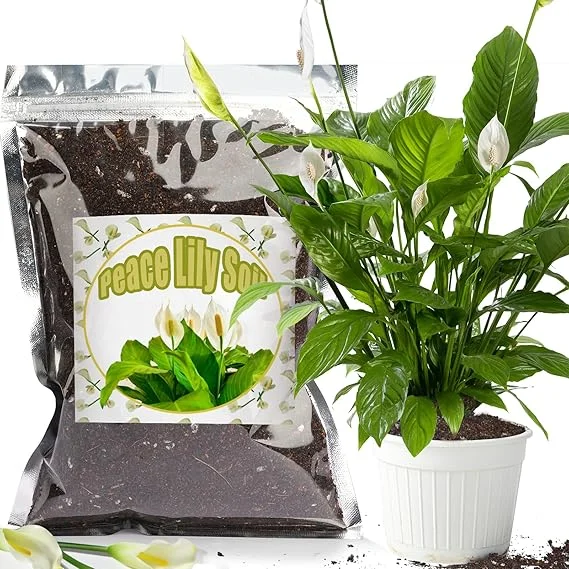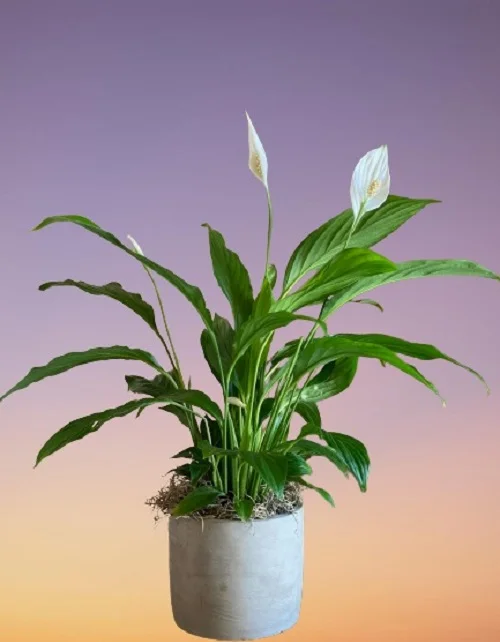13 Reasons for Yellow Leaves on Peace Lily and How to Fix Them
Some links in this post may be affiliate links
Peace Lily leaves may turn yellow due to poor lighting, inconsistent watering, soggy soil, dry air, nutrients deficiency, temperature stress, root-rot, pests infestations among others.
Peace Lily which goes by the botanical name, Spathiphyllum wallisii, thrives in bright indirect light, average warmth, moderate humidity and moderately moist, fertile, well-drained soil conditions that are similar to those of its native tropical habitat. Learn how to grow and care for Peace Lily.
Peace Lily is a magnificent plant with glossy, dark-green leaves which may turn yellow if you fail to provide the right conditions. Below are 13 reasons why your Peace Lily leaves may turn yellow and how to fix them.
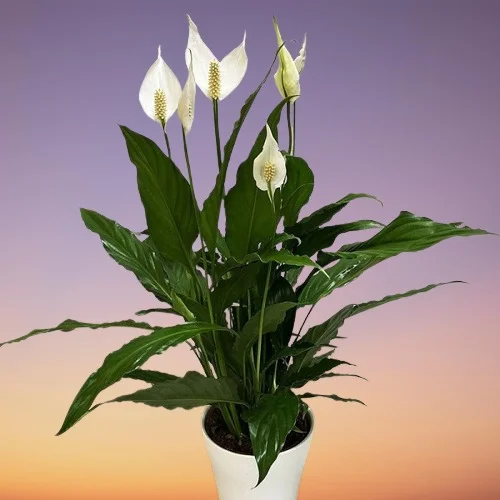
13 Reasons Peace Lily Leaves are Turning Yellow & Remedies
1. Poor lighting
Being an understory plant, Peace Lily prefers dappled light away from direct sunlight. Enough light is required for photosynthesis, the process of food making in plants, which is needed for growth and energy for the plant.
Peace Lily can tolerate low light but too little light means that the plant cannot make adequate food for growth and development which causes the leaves to begin dying where they turn yellow, then brown and eventually die.
Though Peace Lily can withstand some morning sunlight. Too bright light or hot direct sunshine will cause the plant to lose the dark-green leaf color, develop yellowish leaves and brown sunscorch marks.
How to fix it
Position your Peace Lily in a spot where it will receive bright, indirect light or instal a grow light if the natural lighting is not enough.
Where the light is too bright, place the plant in a more shaded place or shield it from direct sunlight by installing a light curtain to filter the light.
2. Soil quality
Poor quality soil does not drain easily and will become compacted or soggy which will lead to reduced growth, yellowing of leaves and death.
How to fix it
Grow your Peace Lily in rich, loose, well-drained soils which will not get soggy while providing the required nutrients. These potting mixes designed for Peace Lily are ideal for this plant.
3. Dry air
Dry air wil result in too low air humidity which will cause the plant to stop growing, develop yellow leaves and may die if not corrected.
How to fix it
To for your Peace Lily, set the pot on a wet pebble tray, use a cool mist humidifier, group the plants together or grow the plant in a well-lit bathroom and other humid areas in the home.
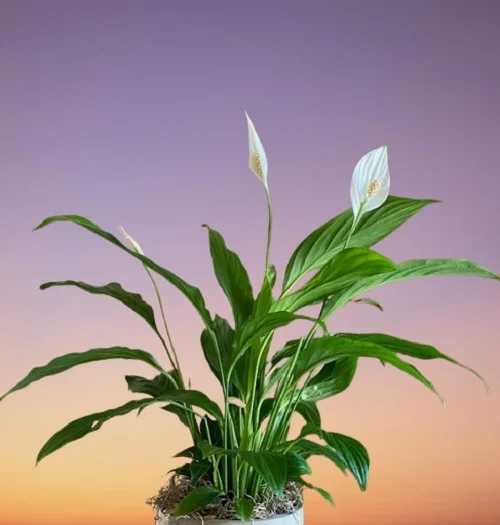
4. Pest infestations
Peace Lily is fairly resistant to pests. However, weak plants can be infested by aphids, spider mites, mealy bugs and fungus gnats. The sap-sucking insects will cause wilting, reduced growth and yellowing of leaves.
How to fix it
Always make sure that your Peace Lily is healthy at all times by giving it with the proper growing conditions.
Minimize pest infestations by increasing the humidity as the pests are prevalent in dry conditions.
Maintain the plant well pruned by removing spent flowers, dead and yellow foliage to minimize pest infestations. Cut the leaves with a clean sharp knife or scissors as close to the base as possible.
Seperate the affected plant away from the rest of the plants to reduce spread and treat it with an insecticidal soap or neem oil. Make sure to follow the manufacturer's instructions.
5. Root-rot disease
Peace Lily is prone to root-rot which is enhanced by soggy soil and is characterized by wilting, drooping, yellowing and eventual death of the plant.
How to fix it
Slip the Peace Lily out of its pot and inspect the roots. Brown-black mushy roots indicate root-rot, trim them off.
Treat the healthy roots with a copper-based fungicidal solution as recommended by the maker.
Disinfect the pot with the fungicidal solution or use a fresh pot to repot the plant in fresh, free-draining soil. Keep the plant dry for some time before resuming watering.
Ensure that the pot has a drainage hole and the soil is free-draining to prevent it from getting soggy in the future.
Reduce watering in fall and winter as growth is minimal at this time, therefore, the plant does not require much water.
6. Nutrients deficiency
Overfeeding a Peace Lily will cause the roots to die due to fertilizer burn. If the roots die, they cannot take up nutrients and water required for photosynthesis, thus, the plant begins to die and the leaves turn yellow.
If the plant is underfed, it is not getting enough nutrients needed for growth, therefore, the leaves turn yellow and die. A lack of micronutrients like Magnesium and Iron in the soil for will cause the deep-green leaves to turn yellow.
How to fix it
Feed your Peace Lily monthly in spring and summer with a phosphorous-rich, water-soluble fertilizer which contains micronutrients for proper growth.
Stop feeding in fall and winter as growth is minimal and feeding at this time can lead to fertilizer burn; yellowing, browing and death of the plant.
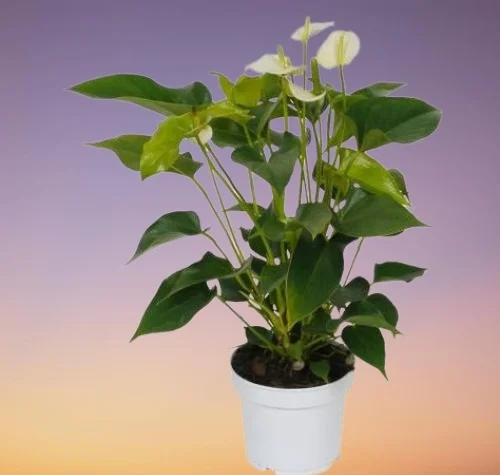
7. Inconsistent watering
Underwatering means that there is too little moisture in the soil for the plant to take up to the leaves for photosynthesis, to make food for growth of the plant.
Overwatering results in soggy soil which leads to the death of the roots due to lack of oxygen. When the roots die, the plant cannot take up water and therefore it cannot make food for growth and energy.
Lack of adequate food for growth and other processes in the plant will cause the plant to stop growing resulting in yellowing, leaf drop and eventual death of the plant.
How to fix it
Do not water your Peace Lily on a schedule. Water when the top 2-3 inches of soil feel dry but do not allow the soil to dry out completely for prolonged periods of time.
Should you forget to water your plant, thoroughly water the plant and mist the leaves immediately and it should perk up in a short time.
8. Soggy soil
Soggy soil will lead to the death of the roots due to lack of oxygen. This means that they cannot take up water and therefore the plant cannot make food needed for growth and energy. As such, growth stops, yellowing and leaf drop occur as the plant progresses to death.
How to fix it
Grow your Peace Lily in a pot that has a drainage hole and well-draining soil to prevent waterlogging.
9. Temperature stress
Extreme temperatures; either too cold or too hot brought about by drafts will reduce growth which will cause the leaves to yellow, brown and fall off.
How to fix it
Keep your Peace Lily away from sources of drafts like windy windows and doors, air conditioning units, heat sources and others to maintain a warmth of 16-280C.
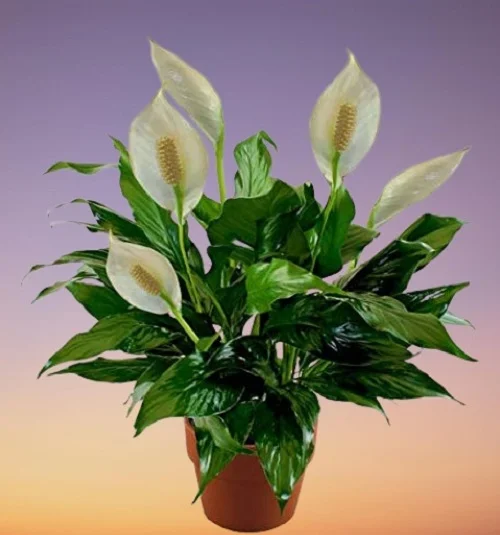
10. Water quality
Consistently watering your Peace Lily with too cold water will cause cold shock for this tropical plant. This will lead to reduced growth, yellowing, browning, leaf fall and eventual death of the plant.
Peace Lily is sensitive to salts and chemicals dissolved in water and respond with brown leaf tips, yellowing and death of the plant.
How to fix it
Use water that is at room temperature to water your Peace Lily. Ensure that the water is free of chlorine, florides and other dissolved chemicals for instance rain water or filtered water.
Occasionally, flush out accumulated salts by running a stream of water through the soil. Allow the stream of water to run for some time and repeat the process several times.
11. Being extremely pot-bound
Peace Lily grows best when slightly pot-bound but when it becomes extremely root-bound the leaves begins to wilt, droop, yellow and eventually drop off.
The reason for this is that the roots have filled the pot, meaning there is very little soil to hold water when the plant is watered. Therefore, water cannot be taken up to the leaves resulting in stunted growth, yellowing and leaf loss.
How to fix it
Check the bottom of the pot, if a lot of roots are growing through the drainage hole, repot your Peace Lily into a pot one size larger than the current one or divide it into several sections to propagate new plants.
Thereafter, repot the plant at the beginning of the growing season (spring to early summer) when it becomes extremely pot-bound.
12. Repotting shock
Repotting may cause the plant some shock which may lead to some leaves wilting and turning yellow before it can adjust the new growing conditions.
How to fix it
To minimize repotting shock, water your Peace Lily thoroughly one day before repotting as a well hydrated plant experiences less shock and is easier to divide.
Avoid making too many changes at once. For instance, after repotting, maintain the plant in the same spot until it is well established before moving it to a new location.
13. Aging
As the Peace Lily leaves mature, the older leaves turn yellow and die. Therefore, do not be alarmed, if one or two leaves yellow as this is a natural process.
You liked it? Share on social media.
Related Content
Amazon Associates Disclosure
Homeplantsguide.com is a participant in the Amazon Services LLC Associates Program, an affiliate advertising program designed to provide a means for sites to earn advertising fees by advertising and linking to amazon.com.

